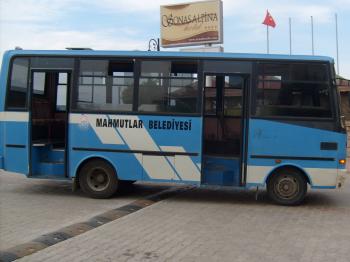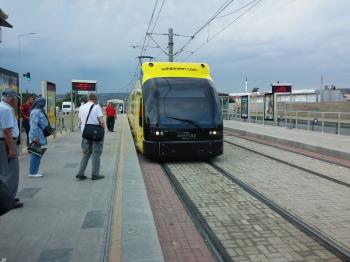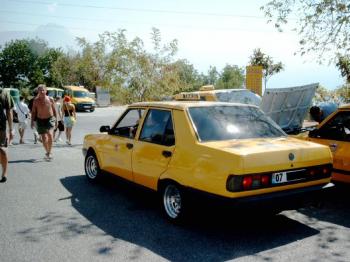Getting Around Antalya
Getting Around Antalya
All City Transport Options: What Locals Use and What’s Best for Tourists
General Overview
Getting around Antalya feels like an adventure in itself. One thing that surprised me about the transport here is the abundance of options but also the peculiarities that come with each. The original tramway system is relatively new, and it’s easy to navigate but doesn’t cover the entire city. I often find myself relying more on the buses, which cover a lot of ground—you can hop on the 600 line if you want to head to the Konyaaltı Beach area.Public transport in Antalya operates from around 6 AM until midnight, which is pretty decent considering you might still get out pretty late at night. The tickets are inexpensive, running roughly 15 TL (about $0.50), quite a bit cheaper than what you’d pay in larger cities globally. A common mistake I see tourists make is assuming taxis are the only option after hours; instead, check for the Dolmuş! These shared minibuses are a great, cost-effective way to get around, especially if you're in a group.
Oh, before I forget, one local hack is to get an AntalyaKart. It’s a smart card you can use on buses and trams, and it saves you a bit instead of buying single ride tickets. Trust me, in the long run, it adds up!
On my first ride, I was frustrated trying to read the bus schedules, which seemed a bit of a puzzle. However, a pleasant surprise was finding that the drivers were friendly and usually willing to help translate where I wanted to go. Just be prepared for chaos during rush hour, especially if you're on the bus during a workday. It can get super packed—the locals seem to have no problem squeezing in like sardines!
Weather can influence your transport experience too; during the hot summer months, I would recommend traveling in the early morning or later in the evening to avoid the sweltering midday heat.
You mightcompare a tourist pass for public transport, which can seem pricey but includes more flexibility. Generally, off-peak tickets are cheaper compared to peak travel times, so if you can, plan accordingly. If you're considering taxis, just know a short, local ride can set you back about 80 TL compared to a couple of rides on the bus.
All in all, navigating around Antalya is like getting into the heartbeat of the city. I suggest sticking to the buses for most rides unless you’re in a rush, and keep your antenna up for friendly locals—who are usually more than willing to lend a hand if you’re lost.
Types of Transport

popular with tourists
The bus system in Antalya is extensive and provides convenient access to many popular tourist destinations, including Kaleiçi, the Old Town, and Lara Beach. Tickets typically cost around 15 Turkish Lira and can be purchased from kiosks, ticket machines, or directly from the bus driver, but it's best to have exact change ready. For an efficient travel experience, you can use the Antalyakart, a refillable smart card that grants discounts on fares and is accepted on all buses. Make sure to check the bus schedules in advance on the official Antalya Transportation website, as some routes may not operate frequently, especially during off-peak times. Lastly, while buses are generally safe, always keep your belongings close and be aware of your surroundings to ensure a pleasant journey.

popular with tourists
The tram in Antalya is a convenient and efficient way to travel between some of the city’s key areas, including the bustling Konyaaltı Beach and the old town (Kaleiçi). A single ride costs around 15 Turkish Lira, and you can pay using a contactless card purchased at vending machines in tram stations. One important tip for tourists is to check the tram schedule, as the service operates from early morning until midnight, and trains can get crowded during peak hours. Additionally, consider using the tram to avoid parking hassles when visiting popular attractions, and ensure you keep your belongings secure, especially in crowded vehicles.

Taxis in Antalya are readily available and can be found at designated taxi stands, in front of hotels, or can be hailed on the street. The typical fare from the city center to popular destinations like Konyaaltı Beach or the Old Town (Kaleiçi) ranges from 50 to 100 Turkish Lira, depending on the distance, and it’s important to pay using cash as some taxis may not accept credit cards. Always ensure that the driver starts the meter at the beginning of your ride to avoid any disputes over pricing.
For a smoother experience, download a local taxi app such as "BiTaksi," allowing you to book a ride easily and track your driver's location. It's recommended to have your destination written down in Turkish, especially if you’re traveling to less touristy areas, to avoid any communication barriers. Lastly, while taxis in Antalya are generally safe, always check that the taxi is an official one, identifiable by the yellow and blue color and the taxi sign on the roof.
For a smoother experience, download a local taxi app such as "BiTaksi," allowing you to book a ride easily and track your driver's location. It's recommended to have your destination written down in Turkish, especially if you’re traveling to less touristy areas, to avoid any communication barriers. Lastly, while taxis in Antalya are generally safe, always check that the taxi is an official one, identifiable by the yellow and blue color and the taxi sign on the roof.

The auto rental market in Antalya is well-developed, offering a range of vehicles from compact cars to larger family vans, making it ideal for exploring both the city and nearby attractions like the stunning Duden Waterfalls or ancient ruins in Perge and Aspendos. Typical daily rental costs range from €25 to €60, depending on the vehicle type, and most companies accept credit cards, so it's advisable to book in advance online for better rates and availability. While driving, keep in mind that the main roads are generally well-maintained, but be prepared for heavy traffic, especially during peak tourist seasons from June to August; you can save time by avoiding rush hours, typically between 8-10 AM and 5-7 PM. Also, always check for parking signs, as some areas have strict regulations; popular spots like Kaleici may require you to park slightly outside and walk in. Lastly, ensure that you have a valid international driving permit, as police checks are common, and familiarize yourself with local driving laws to ensure a safe and pleasant experience.
Here you can learn about all types of transport in Antalya. What transport is available, how to reach tourist attractions and which mode of transport is optimal.
